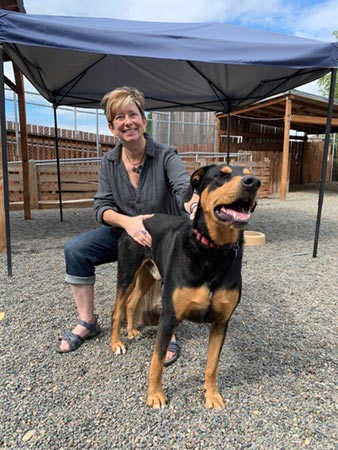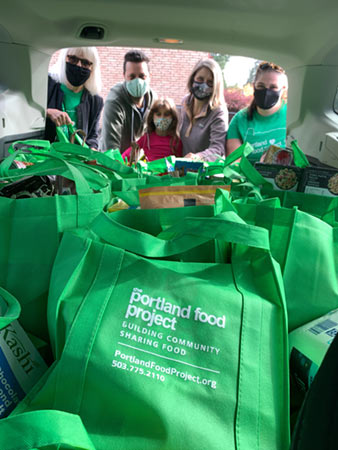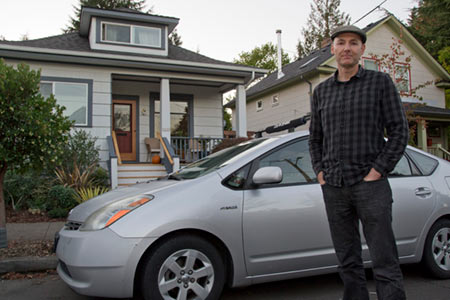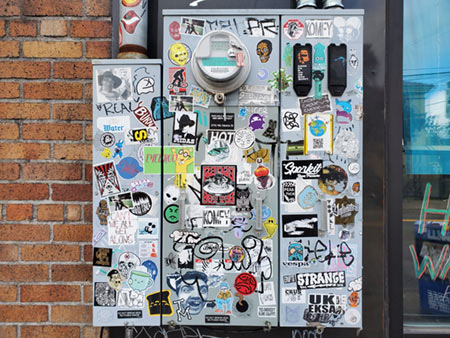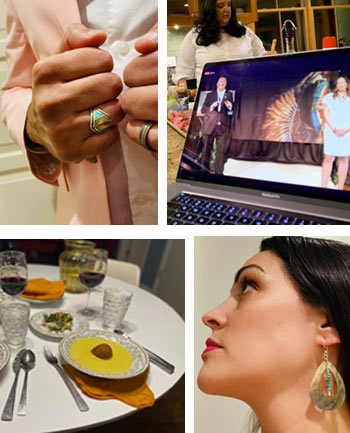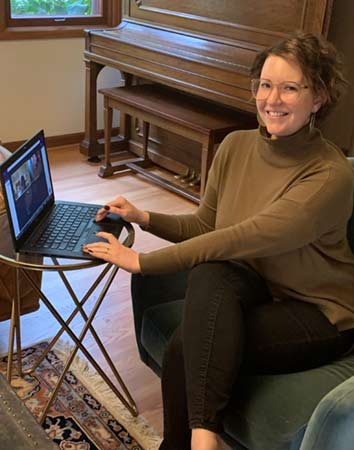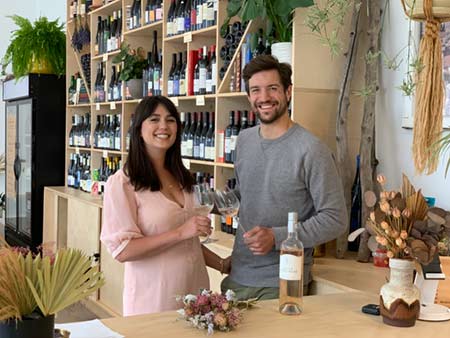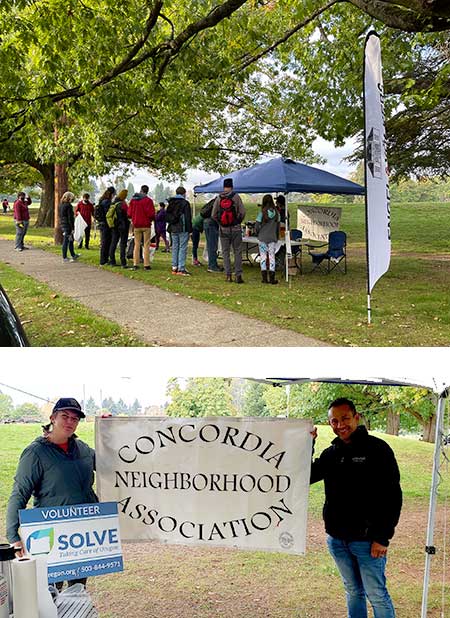
Saturday, Dec. 4, is the next Concordia Neighborhood Litter Pick Up. It’s from 9 a.m. to noon, beginning in Alberta Park at Ainsworth Street and 22nd Avenue. Sign up at SolveOregon.org or contact Concordian Gina Levine with questions. She’s at CNewsBusiness@ConcordiaPDX.org and 503.891.7178.
An estimated 1,000 pounds of trash were removed from the neighborhood in early October. That’s when 55 volunteers spent three hours picking up litter in the northeastern portion of Concordia. It was the first of what’s planned for regular events.
“We filled 60 trash bags and four truckloads of items that had been thrown away,” she said. “It felt so great on the way home to see our litter-free neighborhood.”
The pick-up events are sponsored by Concordia Neighborhood Association. Leaders are Gina and board member Javier Puga-Phillips. Their efforts are supported by SOLVE, the statewide organization working to restore and preserve the environment by mobilizing the power of volunteers.
SOLVE was founded in 1969 by Oregon Gov. Tom McCall to reduce and clean up litter and vandalism throughout the state. The first volunteer beach clean up in the nation was organized by SOLVE in 1984. Since then, the concept has spread across the U.S. and to more than 100 countries.
Fresh air and social distancing are part of the CNA litter pick-up efforts.
“Participating in a litter pick up is COVID-friendly,” Gina pointed out.
“A few hours every few months will make a huge difference in how the neighborhood looks and feels,” she added. “We really hope you can join us for the next event.”
Want to get rid of trash more often?The city of Portland offers support and information about cleaning up Concordia and other neighborhoods. Among the many resources listed there are:
- Adopt One Block: featured in CNews
- The city’s hotline to report overflowing local public trash cans: WasteInfo@portlandoregon.gov and 503.823.7202
- A hotline to report abandoned shopping carts in your neighborhood: 888-55- CARTS.
- SOLVE’s volunteer events statewide: SOLVEOregon.org
Steve Elder, elder. monaville@gmail.com, is an inactive lawyer, a developer, activist and old grouch
